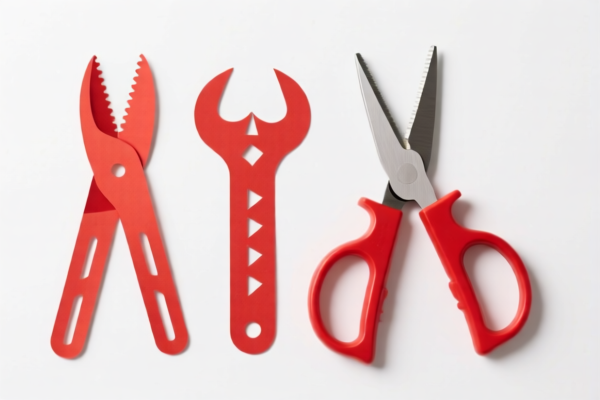| HS Code | Official Doc | Tariff Rate | Origin | Destination | Effective Date |
|---|---|---|---|---|---|
| 8205595505 | Doc | 60.3% | CN | US | 2025-05-12 |
| 8441100000 | Doc | 55.0% | CN | US | 2025-05-12 |
| 3926909989 | Doc | 42.8% | CN | US | 2025-05-12 |
| 7326908688 | Doc | 82.9% | CN | US | 2025-05-12 |




Okay, let's break down the HS codes and tax implications for your "PAPER CUTTER" declaration. Here's a structured analysis to help you understand the best classification and potential costs.
Understanding HS Codes: A Quick Primer
HS codes (Harmonized System codes) are internationally standardized codes used to classify traded products. The first 6 digits are generally consistent worldwide, while additional digits are used for more specific categorization by individual countries. Here's how the codes generally break down:
- Chapter (First 2 digits): Broad category of the product.
- Heading (First 4 digits): More specific grouping within the chapter.
- Subheading (First 6 digits): Further refinement of the product.
- Additional Digits: Country-specific details.
Analysis of Your HS Code Options
Here's a breakdown of each code you provided, with explanations and recommendations:
1. 8205.59.55.05 – Other handtools (including glass cutters) of iron or steel
- Chapter 82: Hand tools. This is a strong contender if your paper cutter is primarily a hand-operated tool.
- Heading 8205: Hand tools (including glass cutters) not elsewhere specified or included.
- Subheading 8205.59: Other handtools (including glass cutters) and parts thereof.
- Additional Digits 8205.59.55.05: Specifically for iron or steel handtools.
- Tax: 60.3% total tax (5.3% base tariff + 25% additional tariff, increasing to 30% after April 2, 2025).
- Considerations: This code is suitable if the paper cutter is a simple, manually operated tool. If it has significant motorized components, this may not be the best fit.
2. 8441.10.00.00 – Cutting machines for making up paper pulp, paper or paperboard
- Chapter 84: Machinery and mechanical appliances. This is appropriate if your paper cutter is a more sophisticated, powered machine.
- Heading 8441: Machinery for making up paper pulp, paper or paperboard, including cutting machines.
- Subheading 8441.10: Cutting machines.
- Additional Digits 8441.10.00.00: General code for cutting machines.
- Tax: 55.0% total tax (0% base tariff + 25% additional tariff, increasing to 30% after April 2, 2025).
- Considerations: This is a good option if the paper cutter is electrically powered, has automated features, or is designed for high-volume cutting.
3. 3926.90.99.89 – Other articles of plastics and articles of other materials
- Chapter 39: Plastics and articles thereof. This code is relevant if the primary material of the paper cutter is plastic.
- Heading 3926: Other articles of plastics and articles of other materials.
- Subheading 3926.90: Other.
- Additional Digits 3926.90.99.89: General code for other plastic articles.
- Tax: 42.8% total tax (5.3% base tariff + 7.5% additional tariff, increasing to 30% after April 2, 2025).
- Considerations: This is suitable if the paper cutter is made predominantly of plastic, and the plastic components are the defining feature.
4. 7326.90.86.88 – Other articles of iron or steel
- Chapter 73: Iron or steel articles. This code is relevant if the paper cutter is made predominantly of iron or steel, but doesn't fall into more specific categories.
- Heading 7326: Other articles of iron or steel.
- Subheading 7326.90: Other.
- Additional Digits 7326.90.86.88: General code for other iron or steel articles.
- Tax: 82.9% total tax (2.9% base tariff + 25% additional tariff, increasing to 30% after April 2, 2025, plus a 25% additional tariff on steel/aluminum products).
- Considerations: This is a broad category and generally has a higher tax rate. It's best to avoid this code if a more specific classification is possible.
Recommendation
Based on the information provided, 8441.10.00.00 (Cutting machines for making up paper pulp, paper or paperboard) is likely the most appropriate HS code if your paper cutter is powered and has significant mechanical features. If it's a simple hand tool, 8205.59.55.05 is the better choice.
Important Reminders & Next Steps
- Material Composition: Confirm the primary material of the paper cutter. This is crucial for accurate classification.
- Functionality: Is it hand-operated or powered? What is its primary function (e.g., high-volume cutting, occasional use)?
- Single Invoice: Ensure the single invoice reflects the correct HS code.
- Certification: Depending on the HS code and destination country, you may need to provide certifications (e.g., safety certificates, origin certificates).
- April 2, 2025 Tariff Changes: Be aware of the upcoming tariff increases.
- Consult with a Customs Broker: I highly recommend consulting with a licensed customs broker in your destination country. They can provide definitive guidance based on your specific product and import regulations.
Disclaimer: I am an AI assistant and cannot provide legally binding customs advice. This information is for general guidance only.
Customer Reviews
The page has a lot of good info, but I found it a bit overwhelming with all the technical details. A simpler summary might have been easier for a beginner like me.
I needed to know the right HS code for a plastic paper cutter, and the 3926.90.99.89 section was super clear. The material breakdown helped me choose the correct classification.
The explanation of the 60.3% tariff for HS code 8205.59.55.05 was very helpful. I was looking for a clear comparison of the different options and this page provided it.
Great breakdown of HS code 8441.10.00.00 for powered paper cutters. The tariff info and classification details were exactly what I needed for exporting.